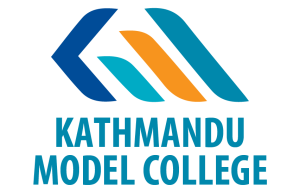-Chandra Prasad Dhakal, Department of Economics, Saraswati Multiple Campus, T.U., Nepal
Abstract:
The study focuses on the causes and consequences of in-migration in the context of Ratnanagar Municipality Chitwan. Since fifty years people from hill side have migrated to Ratnanagar municipality. This study basically focuses on why the people from hill and India have migrated to Ratnanagar. The study follows both qualitative and quantitative research designs and asks the questions about the causes to settle down in Ratnanagar that are analyzed on the basis of priorities. Conclusion has been drawn on the basis of analysis and show why they migrated to Ratnanagar and which of the priority plays an important role for those who have migrated from their homelands to the municipality. Searching for jobs and facilities are the major causes to come down in the area. To find out the causes and consequences, questions were asked to fifty individual respondents and analyzed their priorities to migrate in the study area.
Keywords: In-migration, population, puling, foreign, remittance economy
Introduction:
Migration is a socio-economic phenomenon. Economy plays a determining role in migration process. People want to be economically strong to live a quality life. People need employment for their livelihood. Money can be earned when they get employment. The sources of employment are comparatively more in urban areas than in rural ones. Economy helps to satisfy the basic needs of people. There are limited opportunities for the income resources in hill and village area. Migration is also known as the change of residence whether for long or short period time. According to Oxford Dictionary (1969) defines, “Migration means to move from one place, country or town to another.” Thus, migration is the movement from one place to another within the country or outside it. People migrate from their permanent place of residence
to a completely new place United Nation Multilingual Demographic Dictionary defines migrating as “a form of geographical mobility or spatial mobility between one geographical unit and another, generally involving change in residence from the place of origin or place of departure to the place of destination or place of arrival.” (UN, 1973, p.173). Thus, people migrate from village area to urban areas to be economically strong. Ravenstein (1895) formulated various laws about migration. They are as:
The long distance migrants prefer for the purpose of commerce. The number of migrants to a place decreases as the distance increases. The male appears predominant in the long distance migration, whereas female is dominant inshort distance migration. The residents of town are less migratory than those of the countryside. Pull and push factors determine the migration theory. (p. 2)
Above lines show the basic feature and trend of migration that was practiced in nineteenth century. Stouffers (1940) notes, “Liner distance is a less important determinant of migration than the nature of space; the distance should be considered in socio-economic terms rather than geometric ones” (p. 5). Thus, distance traveled by foot is not as important as the number of opportunities available. His basic hypothesis is that the numbers of opportunities at that distance are inversely proportional to the number of intervening opportunities. Todaro (1969) mentioned labor migration and urban employments that the probability of finding a job in modern sector and their wage differentials between the urban and rural areas are the causes of migration. Todaro, further added that “the industrial expansion productivity and growth have direct effect on expected real earnings among potentials migrants. The mode is an important step towards the qualification of economic motives perceived in rural-urban income “(p.67).
In the context of Nepal CEDA (1977) carried out a study of in-migration pattern in Kathmandu. The study focused that more than 50 percent of the migrants were of age group 20-30 years. The study also concluded that economic opportunities were the major causes of migration. The study further identified some causes of migration of people from hill areas of Central Nepal. It suggested that selective nature of age, sex, occupation, population pressure, food shortage and poverty in the hill region are the main reason for migration. The plan can control the volume of migration from hilly region the availability of intervening opportunities through investment in road and irrigation. Gurung (1984) analyzes in his book ‘Inter Regional Migration in Nepal’, showed that population pressure, land holding, shortage of food grain, environmental stress in mountain/hill were found as the push factors and fertile land, resource government incentives, planned resettlement, physical facilities, presence of friends and relatives in the Terai were found as the pull factors. K.C. (1998) studied the micro and macro level of rural analysis. Formal migration in Nepal based on data of Population Census 1961 and 1971 concluded that differentials in income derived from the agriculture government resettlement project in Terai, government increased investment in irrigation, industrial activities, and administrative activities in specific towns were structural determinants of migration. For the micro level analysis, K.C. has shown that literary rate, age distribution, local social factors like family kinship were found major factors for the migration. Kunwar (2015) analyzed the causes and consequences of internal migration phenomenon through the multivariate analysis as well as path model. He concluded that the low productivity and insufficient land are main causes of leaving origin and availability of physical facilities and extension of business opportunities reduce the causes of leaving origin but moving of relatives and friends and education increase the causes of leaving origin. He also concludes that the age factor also plays significant role in the process of migration. Niroula (2016) during the time of Maoist insurgency people migrated from hill to Terai.
Other factors, which accelerated this process, were probably the population pressure creation of infrastructure and concentration of development activities that created opportunities for employment in the Terai. As a result, there are considerable changes in demographic, socio-economic and environmental condition both at the origin and destination.
Migration is affected by two factors: pull factors and push factors. The pull factors are attracted by the advantage of particular place such as employment opportunities, economic possibilities, education facilities, health facilities, higher standard of living, new industries, entertainment facilities, cultural tradition and political stability. Similarly, the push factors are disadvantage of the place of origin such as inadequate facilities, low wage, poverty, unemployment, population pressure, and insufficient land, shortage of food grants, education and health problem.
Migration is divided into two categories: internal and international. Internal migration is the movement of people within a country with permanent change in address. It does not affect the structure, composition and growth of population in a country
but it affects all of these factors on the smaller geographical units within a country. Internal migration is divided into two components: in-migration and out migration. In-migrants are those internal migrants who have migrated to the destination from the original place. Similarly, out migrants are those internal migrants who leave these places of origin and migrate to different destination areas. International migration is the movement of population outside the national boundaries.
The in-migration trend is more frequent in Terai districts of Nepal mainly owing to the better opportunities and better future. Hence, Terai areas are densely populated. The fertile land, income resources, education, employment, health services, transportation and communication attract the people dwelling in the village and hill areas in Terai. Therefore, the rapid population growth in the Teria districts has created several problems. Ratnanagar Municipality is also one of the inner Terai areas of Nepal, which faces innumerable problems because of the increment in the size of the population through in-migration.
Objectives and Method:
The main objective of the study is to analyze causes and consequences of in migration in Nepal in the context of Ratnanagar municipality. Specific objectives are to find out major pulling and pushing factors of migration and effect of migration in social development. To achieve the objectives of the study qualitative research design has followed and analyzed the issue in paragraph description. Both secondary and primary source of data has been used for this study. Books, article and already published other materials have used as secondary source. Primary data were collected from field survey questionnaires and, observation. 50 individual were chosen as sample population for this study. Sample has been selected through cluster sampling method and only the
migrants’ people living in Ratnanagar municipality ward no 4 were participated in this study. Conclusion has been drawn through data analysis and perception of the researcher what he has perceived at the time of field visit
Study Area
Ratnanagar municipality is located in Bagmati province. It is one of the main municipality of Nepal located in eastern part of Chitwan East west highway goes though the municipality. The place is famous of tourism and agriculture. It is adjacent to Chitwan national park, and serves as a gateway to the park. This municipality is also a major place for production of poultry products and animal husbandry. People are directly or indirectly dependent in tourism industry. In this way, Ratnanagar municipality has become a center of attraction to the people. Total population of the municipality is 89234 (Municipality Report, 2020). Population is increasing day by day due migration. Consequently, the process of in-migration has been increasing. The increasing problem of in-migration has affected population and development and health and environment inviting different sorts of problems and difficulties. Hence, present research work aims to trace out the actual picture of in-migration in Ratnanagar municipality. In other words, the study is an attempt to find out the causes and consequences brought out by the growing number of in-migrants in Ratnanagar Municipality.
Map of Study Area
Migration Theory
There are various theories related to migration and describe the situation of migration of a particular nation. Shahi (2005) talked by taking the reference of Ravenstein talked about migration at the first time in 1895 in the context of migration flow from Europe to America and none developed area of Europe to urban area. He mentioned
main two factors of migration puling and pushing factors. There are not only limited pulling factors in the host place because people migrated from their birth place to host place with golden dream of bright future. S/He hopes for better economis and social condition with respectful social recognition. Like that pushing factors are also appears in diverse form like starvation, civil war, lack of food. In his time there is starvation and people migrated from one place to another place for food. Ravenstein (1995) concluded that the first 5 of the items, migration and distance; migration by slopes; stream and counter stream; urban to rural difference in propensity to migrate and predominance migration and dominance of the economic motive, though taken from the general conclusion of his second paper are not ordinarily included”(p.33). Like that Stouffer (1960) applied another law of migration. Lee, (1966) notes that the flow of migration is higher in the place of available opportunities but migration towards the area of lower opportunities is lower. The study followed the theory of Ravenstein in the context of Nepal.
Trend and Migration Streams
After the successful control of malaria in Terai region of Nepal, migration movement from Hills and Mountains to Terai started to increase. Major factors in this migratory movements included harsher condition in the Hill and Mountain, limited supply
of fertile land and lack of employment opportunities in these areas. Moreover, availability of fertile land in Terai immediately after the control of malaria and better infrastructural facilities increased the migration from hills and mountains to Terai.
Factors of Migration
Push factors operate in the area of out migration. People want to leave the place of origin due to the restrictions and disadvantages at the place of origin. Push factors refer the poor economic condition at the place of origin. The question “What are the reasons of moving out from the place of origin?” was asked to know the general push causes of migration in this study and the total household respondents answered as lack of higher education, infertile land, job transfer, Maoist problem, geographical difficulties, business failure, no land, natural climates, lack of urban facilities, poor income and family left the origin which were related at the place of origin. The next question, “Among different push factors, which four are the main priority causes?” was asked to know about the priority push factors. The respondents ranked their general causes on different priorities like as P1, P2, P3 and P4. So, the following table was prepared with the help of priority causes of migration.
Table 1:
Distribution of In-migrant Household’s Cause of Leaving the Place of Origin (on the Basis of Priorities)
| Reason for Leaving the Place | Rank with different priorities of households | |||||||||||
| of Origin (push factors) | ||||||||||||
| P1 | P2 | P3 | P4 | |||||||||
| N. | % | N. | % | N. | % | N. | % | |||||
| Lack of higher education | 5 | 10 | 10 | 20 | 12 | 24 | 10 | 20 | ||||
| No fertile land | 7 | 14 | 2 | 4 | 10 | 20 | 5 | 10 | ||||
| Transfer the job | 5 | 10 | 3 | 6 | 5 | 10 | 0 | 0 | ||||
| Maoist insurgency | 4 | 8 | 5 | 10 | 2 | 4 | 7 | 14 | ||||
| Geographical difficulties | 3 | 6 | 3 | 6 | 3 | 6 | 3 | 6 | ||||
| No Land | 2 | 4 | 2 | 4 | 4 | 8 | 2 | 4 | ||||
| Business failure | 1 | 2 | 4 | 8 | 1 | 2 | 8 | 16 | ||||
| Due to the Natural calamities | 4 | 8 | 6 | 12 | 2 | 4 | 1 | 2 | ||||
| Lack of urban facilities | 6 | 12 | 5 | 10 | 3 | 6 | 7 | 14 | ||||
| Family left the origin | 6 | 12 | 2 | 4 | 5 | 10 | 1 | 2 | ||||
| Poor income | 7 | 14 | 8 | 16 | 3 | 6 | 6 | 12 | ||||
| Total | 50 | 100 | 50 | 100 | 100 | 100 | 50 | 100 |
On the basis of first priority causes, 10 percent migrant reported that the main cause of leaving the place of origin was lack of higher education. 14 percent and 10 percent migrants reported that the main cause of leaving the place of origin was lack of cultivable land and transfer of job. Similarly, 8 percent migrants reported that they left the place of origin because of the Maoist problem and geographical difficulties. Out of total households, 6 percent, 4 percent and 2 percent left their origin for no land, business failure and natural calamities.
The second priority cause is associate with education, concerned, 20 percent respondents reported that the reason of leaving the origin was lack of higher education. Similarly, 4 percent, 6 percent and 10 percent respondents reported that the second reasons to migrate were poor income, lack of urban facilities and family left the origin. With regard to the third priority causes, 24 percent migrants told that the third push factor of migration was poor income. Similarly, 10 percent, 20 percent and 10 percent revealed that the third causes to migrate were lack of higher education, lack of urban facilities and family left the origin. From fourth priority of the respondents, 20 percent respondents replied that the fourth push factor of migration was lack of urban facilities. Likewise, 14 percent, 16 percent and 12 percent respondents reported that the fourth push causes of migration were the family left the origin, poor income and lack of higher education respectively. To conclude, lack higher education, lack of urban facilities, family left the origin; poor income and Maoist problem are the main push factors at the place of origin.
Pull factor refers to the factors which encourage migrants for a particular area. Some such notable attractions are good facilities of higher education, urban facilities, fertile land, job opportunities and business opportunities. People select the place
as destination where the pull factors are available in greater number. They are not impressed only by single factor. In this study, the question “why did you chose the current place of destination?” was asked to know about the various pull factor of migrants. The total household respondents told many pull factors such as higher education, fertile land, urban facilities, Job transfer, Job opportunities, relatives, business opportunities and near the birth place which were related at the place of destination. The next question, “Among different pull factors, which four are main priority causes?” was asked to know the main priority causes like as P1, P2, P3 and P4. On the basis of these priority causes the following table was prepared.
Table 2:
Distribution of In-migrants Households According to Pull Factors by Place of Destination (on the Basis of Priorities)
| Reason for Leaving the Place of Ori- | Rank with different priorities of households | |||||||||||
| gin (pull factors) | ||||||||||||
| P1 | P2 | P3 | P4 | |||||||||
| N. | % | N. | % | N. | % | N. | % | |||||
| Good facilities of higher education | 5 | 10 | 6 | 12 | 10 | 20 | 8 | 16 | ||||
| Availability of the fertile land | 6 | 12 | 7 | 14 | 7 | 14 | 6 | 12 | ||||
| Urban facilities | 10 | 20 | 5 | 10 | 10 | 20 | 10 | 20 | ||||
| Job Transfer | 3 | 6 | 1 | 2 | 1 | 2 | 2 | 4 | ||||
| Better job opportunities | 7 | 14 | 10 | 20 | 8 | 16 | 10 | 20 | ||||
| Due to relatives | 6 | 12 | 4 | 8 | 3 | 6 | 2 | 4 | ||||
| Maximum business opportunities | 8 | 16 | 9 | 18 | 7 | 14 | 5 | 10 | ||||
| Near the birth place | 5 | 10 | 8 | 16 | 4 | 8 | 7 | 14 | ||||
| Total | 50 | 100 | 50 | 100 | 50 | 100 | 50 | 100 |
Source: Field Survey 2021.
(Note: Sent percent household do not mention all priorities causes.)
On the basis of first priority, 10 percent of in-migrants household chose the current place for to good facilities of the higher education, 12 percent respondents told that they migrated for fertile land. Similarly, 20 percent, 6 percent and 14 percent of total in-migrant households migrated to get urban facilities, job transfer and job opportunities. From second priorities, 14 percent of in-migrant households selected the current place of residence to have urban facilities. 12 percent, 18 percent and 16 percent households migrated to achieve higher education, business opportunities
and near the birth place respectively. To response of third priority of households, 20 percent respondents reported that they chose the current place of residence for the urban facilities. Similarly, other respondents reported that they chose the current place of residence because of good facilities of higher education, business opportunities and maximum job opportunities. Likewise, concerning the forth priorities of households, 14 percent respondents reported that they selected the current place of residence
to accompany the relatives. Similarly, rest of other respondents informed that they selected the current place of residence to get job opportunities, business opportunities and near the birth place. At last, fertile land, good facilities of higher education and urban facilities are the major pull factors at the current place of residence.
Migration brings about change in the size of population. The composition, distribution and growth of population of any region are affected by migration. The process of migration has negative and positive impact both at the place of origin and destination. Due to insufficient pull factors, people migrated from mountain and hill area to Terai area. This migration creates problems of population pressure, deforestation, environmental pollution and unemployment at the place of destination.
Migration in Ratnanagar Municipality has taken place from various parts of the mountain, hill and terai districts surrounding area of the district and boarders of India. Before the influx of in-migrants and immigrants to Ratnanagar the local inhabitants were the Tharus. The Tharus are the first population and they were migrated from India and Madi area. There is a significant impact on socio- economic, cultural dispersal and natural imbalance in the population of Chitwan due to migration. Therefore, the study has found both positive and negative consequences of in-migration in Ratnanagar municipality.
Findings and Conclusion:
Both pulling factors and pushing actors equally play role to migrate people from home land of study area. Lack of higher education, no fertile land, Maoist problem, geographical difficulties, and lack of urban facilities, low income, and natural calamities are the main pushing factors that play higher role to motivate people in migration. Like that modern facilities health, education, job opportunities are appeared as main pulling factors. The main causes of attraction in the study area is safety. In-migration is the result of the distribution of unbalanced natural resources and development in different parts of the world and Nepal. Due to the urban faculties, the population is increasing in urban area especially in developing countries like Nepal. But urban region cannot succeed to increase the employment opportunities and infrastructures to meet the need and demand of the incoming migrants. As a result large number of population is living in urban area in poor housing and environment. In such a situation, urban area cannot solve the problem of poverty and mass unemployment in rural area.
The rural to urban migration stream plays the dominant role in the study area people from Dhading, Baglung and Tanahun districts are majorly came down Chitwan
through migration process. Majority of in-migrant household population are engaged in study, domestic work, farming, service and business and tourism. In case of land, most of the in-migrant households depend on less than 10 kattha which is in sufficient for agriculture occupation. Many in-migrants have migrated in the municipality with their self-decision. Large number of in-migrants have involved in their expected work. Eventually, the study finds out the consequences of in-migration such as, population pressure, increase in the land price, unemployment, and mismanaged settlement. Similarly, in-migration has affected different other areas at destinations like occupation status, monthly income, marital status and the size of the land. In-migration and out migration should be discouraged which constitutes mostly the muscle and brain drains and deprive the source areas of the enterprising youth which are very essential for development and on the other hand in-migration of such youth deprive and displace the local youth of their employment opportunities. This may lead to social tension between migrant and local population.
Recommendations
It creates the additional burden to densely populated land in urban area. So, the following suggestions can be forwarded as remedies:
Essential urban facilities like education, health, drinking water, employment opportunity should be provided in the rural area to control the internal migration.
Basic need and job operative programs beekeeping, women empowerment program should be provided in rural area to control the flow of migration.
To control the mismanaged settlement, municipality should mange industrial and housing sector the municipality should bring forth the concept of town planning. The construction of the building is to be as per the direction of the municipality.
Small-scale industries should be developed in these areas to reduce the disguised and seasonal unemployment.
The implementation of the rule and regulation can control the problem of deforestation. Wise use of forest resources and reduction of over grazing can help to migrate of the burning problem of deforestation. Public awareness can work as major to control deforestation regarding the importance of the forest. Similarly, coal, biogas and electricity can be used for the alternative for the fuel purpose.
Government should provide irrigation facilities to increase the production of land and allow double cropping, so that increased population can be absorbed in farm. Therefore the government should try to control follow of water of the rivers and made channel for the use of irrigations.
Agriculture inputs and training should be provided to increase the capacity and production of the farmer. Agriculture inputs like improved seed fertilizer, agriculture tools and equipment should be made available for the farmers at low price for encouraging them to apply these inputs for higher production to sustain the increased population.
Female education should be encouraged and motivated in this area. Girls’ schools are to set up as well as free education for them should be provided. Guarantee of job opportunity should be provided to the females by creating such enterprises as small-scale handicrafts and cottage industries.
Family planning should be encouraged to reduce the high growth rate of population and large size of family for which family planning education program should be launched in the municipality.
Municipality should encourage the in-migrants for migration registration, birth registration, marriage registration and death registration.
References:
CEDA (1977). Migration in Nepal, A Study of Far-western Development Region.
Kathmandu.
Government of Nepal (2011) Nation population census. Kathmandu: Nepal Government.
Gurung, H. (1984). Regional Patterns of Migration in Nepal, Papers of the East-west Population Institute. Kathmandu.
K.C., B. K. (1998). Trend Patterns and Implications of Rural to Urban Migration in Nepal, (CDPS), Kathmandu.
Kunwar, L.S. (2015). Causes and Consequences of Internal Migration in Nepal, A Case Study of Bharatpur Municpality, Chitwan, and Unpublished M.A. Thesis Submitted to CDPS, T.U.
Lee, E.S. (1966) “A Theory of Migration” Demography, Vol. 3 (1).
Niroula, P. (2016). Internal Migration, Population Monograph of Nepal, Central Bureau of Statistics, National Planning Commission Secretariat, Kathmandu, Nepal.
Ratnanagar Municipality (2020). Municipality Report, 2020. Ratnagar: Chitwan.
Ravenatein, E.G. (1995). The Law of Migration, Journal of Royal Statistical Society, Vol.
48.
Shahi, J. (2005) Labour migration issue in Nepal, Government Review of Labor Migration. Kathmandu: National Planning Commission.
Stouffer, S.A. (1940). “Intervening Opportunities and Company Migrants”. Journal of Regional Science, Vol. II.
Todaro, B. (1969) Rural Urban Linkages and Sustainable Rural Livelihoods. Rupa:
India.
UN, (1973). United Nation Multilingual Demographic Dictionary. New York: UN.










